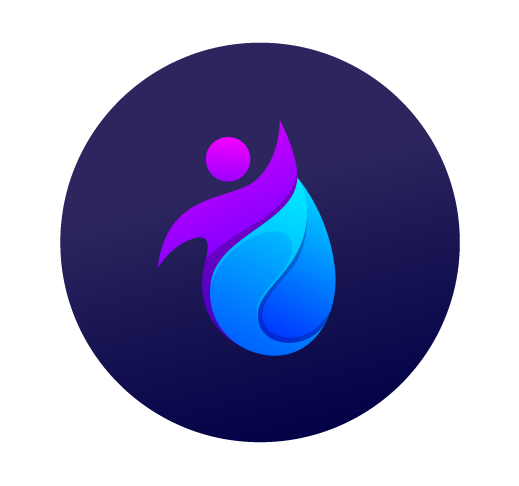Getting buried in job postings feels exhausting, but there’s a smarter way forward—using job alerts and boards efficiently keeps you ahead. Being organized can save hours each week.
Efficient use of job alerts means less scrolling and more targeted opportunities. With strategy and planning, you’ll spend less time searching and more energy applying for relevant openings.
This guide breaks down how to turn job alerts and boards into your personal recruitment assistant. Dive in to discover actionable tactics and real-life examples you can use now.
Setting Up Targeted Alerts for Maximum Efficiency
The right alert setup means only the best-fit jobs land in your inbox. Personalize your search for roles, locations, or industries that actually match your goals.
A focused alert system reduces distractions. When every alert is relevant, there’s no overwhelm. Job alerts filter out noise and spotlight exactly what you need to see.
Choosing the Right Keywords for Alerts
Pick keywords directly from real job descriptions, not just job titles. Scan postings you like for recurring phrases, certifications, or skills and include those in your alert list.
Let’s say you’re seeking customer support roles; include terms like “customer care” or “client relations” besides “customer service.” Cast a net that includes reasonable synonyms but avoid irrelevant, broad terms.
If a position lists “remote problem-solving” as a must-have, add it. Hyper-focused keywords cut down spam alerts, yielding higher-value notifications for busy job seekers.
Pinpointing Ideal Locations
Job alerts become actionable if they’re set to the right locations. Filter by specific cities, regions, or even zip codes if relocation isn’t on the table.
Most job boards let you draw a radius—or exclude cities entirely. For remote jobs, try “remote” or “work from home” as explicit search criteria.
Refining locations means you won’t waste time on jobs you can’t or don’t want to reach. Use these targeted settings to simplify your daily review routine.
| Platform | Alert Customization | Frequency Options | Tip for Best Results |
|---|---|---|---|
| Indeed | Job title, location, salary | Daily, weekly | Mix specific and broad keywords for more results |
| Industry, experience, remote/in-office | Real-time, daily | Use network features to surface relevant jobs | |
| Glassdoor | Company, reviews, benefits | Instant, daily | Check employer ratings before applying |
| ZipRecruiter | Phrases, pay range, commute time | Customizable | Apply early with profile autofill tools |
| Google Jobs | Keywords, type, employer | Real-time | Sort by relevance for top listings |
Streamlining the Application Process
Organized application routines boost your response rate and reduce stress. Implementing a clear workflow lets you act quickly on promising job alerts and stay ahead in the queue.
Break the process into defined, repeatable steps: review, tailor, apply. Using a checklist ensures no details are missed, especially when juggling many notifications.
Mapping Out Daily Actions
Set a daily window to process new job alerts, review postings, and shortlist targets. This discipline prevents late-night, scattershot applications and added anxiety.
- Block out 20–30 minutes every morning to review alerts received overnight and flag genuine opportunities based on your criteria—this routine minimizes mental overload.
- Review job descriptions line by line, noting must-haves and nice-to-haves before hitting “apply.” Copy required phrases into your resume or cover letter for better relevance scoring.
- Keep a “done” and “pending” list, marking each application’s date, platform, and status—ensures follow-ups happen regularly, not hurriedly or with mistakes.
- Use browser bookmarks and job board folders to save key postings for revisiting—prevents valuable alerts from slipping through the cracks and supports systematic reviewing.
- Close out each session by prepping the next day’s review—skimming company updates or networking opportunities linked in the job alert can boost your chances further.
Daily habits like these blend automation with mindful review. Structure now pays off later, especially as job alerts grow in volume.
Following Up After Submitting Applications
Once you’ve applied, track responses in a spreadsheet or note. Attach calendar reminders to send polite follow-ups if you haven’t heard back after 10 days.
- Email the recruiter using the exact job alert title as your reference, thanking them for the opportunity and expressing enthusiasm for the specific role.
- If possible, connect on LinkedIn and send a friendly message referencing both your recent application and the job alert that led you to them.
- Document each contact attempt: date, method, and response—helps you see patterns over time and avoid redundant outreach, which can appear unprofessional.
- Respond promptly if you get interview invitations—same day is ideal. Using the alert as context in your reply shows attentiveness and real interest.
- Send a brief thank-you message after interviews, mentioning both the job alert and what drew you to this specific role—details make follow-up stand out.
Consistent, respectful follow-ups demonstrate engagement and keep your candidacy fresh in hiring managers’ minds.
Personalizing Alerts Beyond Job Titles
Broader criteria in job alerts capture roles that match your skills and preferences beyond rigid job titles. Explore how perks, mission, or schedule show up in customizable alerts between platforms.
Custom Filters for Company Culture and Benefits
Searching by benefits, values, or culture keywords—”flexibility,” “mental health days,” “growth opportunities”—produces targeted job alerts that align with what matters to you.
Review job postings for repeated references to internal advancement, mentorship, or diversity. If these fit your values, add them to your filter list in the alert setup.
Alerts focused on softer factors reduce mismatches. When the first contact rings true, your application effort pays off, and interviews become more enjoyable conversations.
Leveraging Skills and Experience Tags
Platforms now allow custom filters for industry certifications, programming languages, leadership roles or even years of experience. Include “Project Management Professional,” “JavaScript,” or “team lead” for sharper alerts.
If you’re early in your field, filter for “entry-level,” “training provided,” or “open to new grads.” Entry-level job alerts flag accessible opportunities for career pivots or recent grads.
Refining by specific skills narrows results quickly—eliminating posts that lack professional fit, so each click leads somewhere promising instead of a generic listing pile.
Optimizing Job Board Use for Consistency
Consistency breeds results—checking boards at set times and refining your alerts means you never miss a relevant role. Over time, you’ll spot recurring trends and cycles.
Build a habit of logging weekly insights from your job alerts: Are certain employers hiring more? Are roles being reposted? This knowledge powers strategic choices and timely applications.
Developing a Multi-Board Workflow
Use unique job alerts on at least two boards. If your alerts return the same postings, tweak your filters to avoid duplicate notifications and wasted time.
Some boards specialize in fields, like tech or healthcare, while others are general. Track which alerts yield the most interviews and focus your efforts accordingly for faster progress.
Schedule batch reviews—Monday for tech, Thursday for sales. This gives each alert batch a dedicated space and strengthens your routine for steady, manageable progress.
Reducing Noise and Staying Focused
Tame the flood of postings by unsubscribing from broad, low-yield job alerts. Actively curate based on what’s actionable—detox your inbox at least once a month.
Create a “priority” folder for alerts that match at least 90% of your criteria. Move weaker matches to an “archive” folder so they’re accessible without cluttering real opportunities.
Choose two boards to focus on for a quarter or new job search season; this builds a sustainable, repeatable flow with actionable results—less chaos, more control.
Increasing Interview Invitations With Tactical Alerts
Smart alert settings increase your application-to-interview ratio. Pinpoint platforms and habits that flag jobs recruiters want filled now—job alerts give early access for fast-track candidates.
Instant alerts set to “just posted” get you in before postings fill up. Applying within the first 48 hours significantly improves callback rates, especially for remote or high-competition roles.
Building an Early-Response Script
Have a reusable template with your resume, cover letter skeleton, and references ready. Update the details for each job alert with exact phrases from the listing for maximum compatibility.
Keep a script ready for online assessment invites: “Thanks for your quick reply to my application via your recent job alert. I’m ready to complete the next step immediately.” Fast responses set a proactive tone.
Rehearse short introductions for calls: “I saw this role via your job alert email and applied this morning—I’m happy to discuss why my recent experience is a direct fit.” Clear, job-alert-specific mentions show attention to detail.
Tracking Success Rates Across Boards
Log which job alerts turn into interviews, callbacks, or rejections, including board, timing, and job type. Over a few months, clear patterns will emerge in your personal dashboard.
Down the line, prioritize alerts and boards that yield interviews. Ditch underperforming sources and lean into proven ones—save time and emotional energy for better leads.
This self-audit process refines future job alert setups. Every cycle gets smoother, helping you land roles faster with less wasted effort.
Piloting Your Search and Staying Flexible
Readjusting job alert parameters based on real-time results keeps your search agile and relevant. Treat each week as a mini-experiment, tweaking settings for stronger returns.
If a job alert keeps surfacing off-target roles, pause or modify it—don’t just delete. Try shifting one criterion at a time, such as salary range, skill keywords, or location radius.
Evaluating and Iterating Alert Strategies
Every Sunday, skim your “archive” folder for relevant patterns—missed or low-value roles can suggest tweaks. Ask, “What if I changed one core setting next week?” Write it down and act.
Real-world example: Emily chased “marketing manager” alerts. After adding “remote” and “content growth,” she found roles at startups that clicked with her goals. Fine-tuning paid off.
Don’t hesitate to experiment outside your comfort zone. Adding alerts for “project coordinator” or “program specialist” may reveal hidden matches you’d otherwise ignore.
Learning From Setbacks and Off-Target Alerts
Missed referrals and interviews happen, but they’re data—keep quick notes after each awkward job alert experience, like “Role not a culture fit,” and use them in next week’s adjustments.
Scenario: A friend got constant admin jobs from a job alert set to “operations coordinator”—after unchecking “office administration,” her alerts improved immediately. Stay adaptable for real improvement.
Let frustrating weeks be part of the process, not a reason to quit. Flexibility wins every time.
Turning Job Alerts Into a Career Advantage
Treat job alerts as a dynamic tool, not a static filter. The precise set of boards and notifications you curate can become a career amplifier—putting you in front of opportunities before they’re widely seen.
Efficient job alerts reduce wasted effort and mental fatigue, helping you see only the jobs most likely to energize your next step. Every tweak and habit pays off in the long run.
Keep your process flexible and responsive, using new information to refine your criteria weekly. Job boards are always changing—adapt and you’ll consistently find the right roles, faster.



